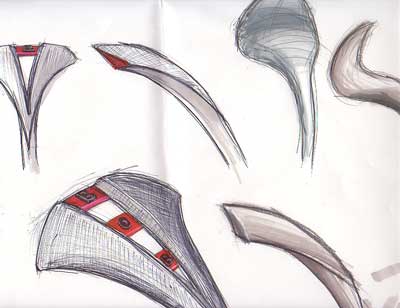Freedom Seat






The Challenge
Bicycle seats have gotten a lot of bad publicity over the past few years, as the medical community attacked them as an impotence threat. Bicycle racers, meanwhile, defended their sport and claimed that correct positioning on the bike would prevent the specific type of problem being addressed.
Regardless which side of the impotence debate you take, it is clear that traditional bicycle seats are a poor solution to the need for sensitive support. A better seat would imitate the body's shape, instead of forcing its own upon the rider.
The Process
Interviews with racers revealed that the vast majority of their time was spent seated in a hunched-over position. This meant the main support of the riders was done by the back portion of the seat, while the front nose merely got in the way.
The racers also mentioned pain occuring most often in long road races and time trials, and not bothering them during shorter criterium-style races. Yet the same seat was used for both types of racing.
Wooden and foam prototypes allowed for tactile and visual style testing with the racers, who were most interested in the prototypes where the nose was entirely removed. Development of this prototype was done in carbon fiber and aluminum, which the racers used on training rides to test comfort and efficiency.
The radically different way of sitting on the seat also forced a reevaluation of other traditional seat elements, most notably the removal of the padding, which now only got between the rider and the efficient shape. Racers took the padding off to try it without, and preferred the bare carbon shell, which was lighter as well.
The Solution
The final prototype has a carbon-fiber shell that arched backward from the aluminum post. With this shape, the rider sits on the seat, instead of straddling it. This keeps the pressure on the broader rear of the seat, and relieves the pressure on the sensitive areas of the body.
Racers found this seat more comfortable and efficient for long road races and time trials, while still preferring a standard nosed saddle for racing shorter criteriums. They preferred the Freedom Seat style for training, however, which made it their default seat.
The Benefits
- Light weight: 250 grams (100 grams lighter than other combination seats/posts)
- Fits in normal bicycle frames and geometries
- Comfortable nose-less shape